Many mushrooms still go unnoticed against the background of more famous counterparts. But some varieties combine valuable properties, excellent palatability and unusual appearance. Volnushki are mushrooms that can surprise and interest everyone who is fond of “silent hunting”.
Content
View Features
Mushrooms grow rapidly, reaching a diameter of up to 10 cm within a few days. It is the edible varieties that are distinguished by their large size and color in grayish-pink tones. There is a mass of popular names for the fungus (broth, bagpipe, waveworm, vollewka, wolfwort, krasulia, volzhanka, bagpipe, rubella), which indicates its relevance among the people.
Appearance and photo
The name of these representatives of the mycological world are obliged to a drawing on a hat that resembles waves or concentric circles. For them, one can distinguish characteristic features:
- the convex hat aligns over time, and even becomes like a funnel;
- pubescent underside of the hat;
- with an incision, thick milky juice with an island taste is allocated;
- grow in small groups;
- The pulp is dense, well tolerates transportation.
Some signs can be traced in the photo, with others a detailed description of the species. Thrills look peculiar, they are rarely confused with other mushrooms, but there are similar species that are best avoided.
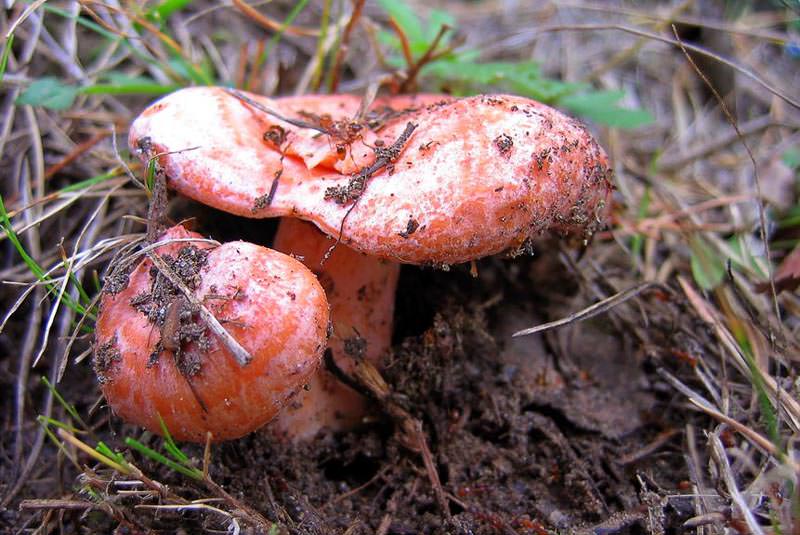 You may be interested in:
You may be interested in:As a rule, these mushrooms are lightly colored, the hat is slightly uneven along the edges, covered with villi, in rainy weather a sticky coating is released on the surface of the mushroom. At a young age, his leg is dense, but gradually acquires a loose structure.
Morphology
This is a conditionally edible mushroom belonging to the genus Lactarius (Miller) and the family of russula. The scientific name of the fungus can be translated as “milkman”, because all representatives of this group invariably secrete a thick juice, similar to milk, to a greater or lesser extent with an acute taste. This liquid contains the milky vessels contained in the pulp of the cap. If the mushroom is old, the juice does not stand out.
The mushroom's hat is quite large - up to 10-12 cm, resembles a funnel, in addition, it looks slightly shaggy. The plates have a downward position, non-fragile. The stalk differs depending on the age of the fetus: in young mushrooms it is dense, in old mushrooms it is hollow.
Habitat
Most of these mushrooms grow in deciduous forests, preferring birch groves. With a high probability, mushrooms can be found in old plantings. They can be found in the forests throughout the summer-autumn period.
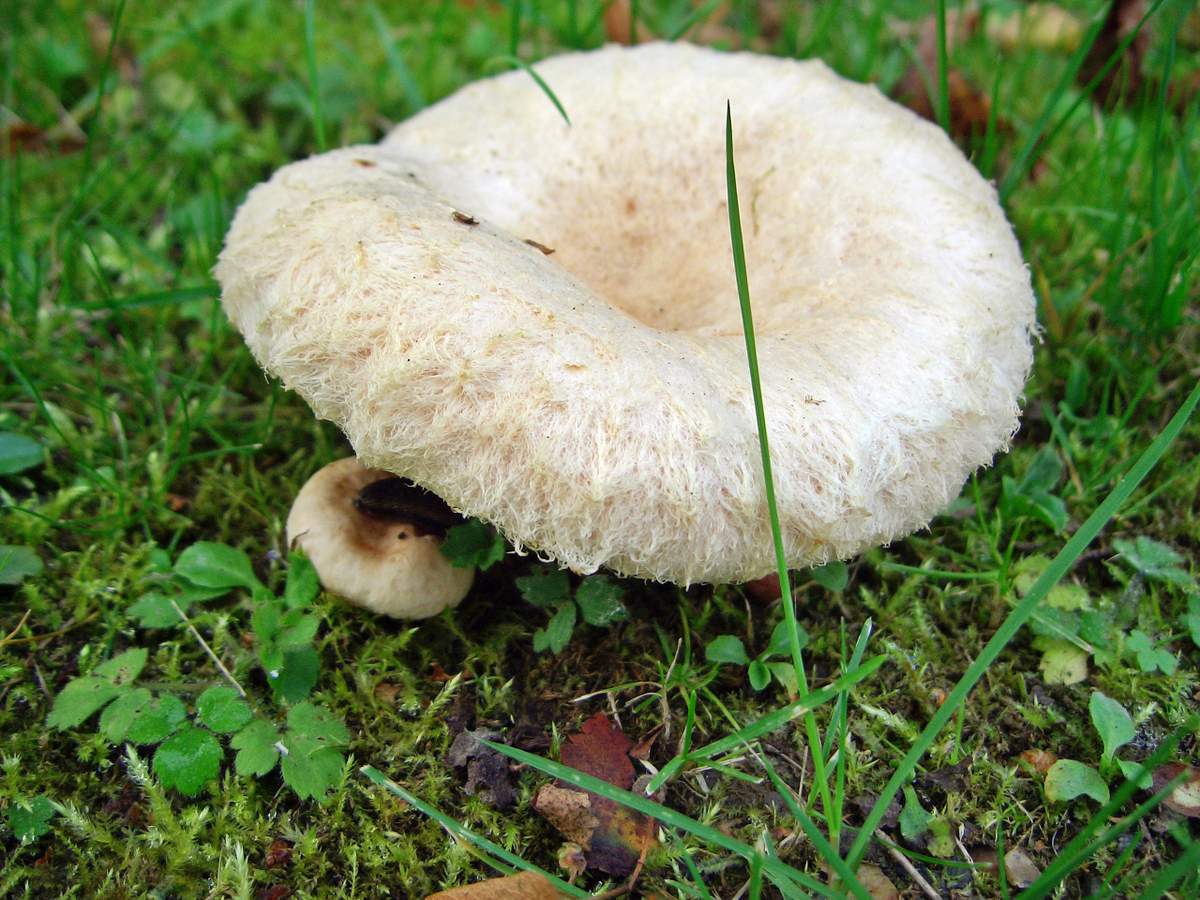
Mlecniks are quite unpretentious to natural conditions, therefore they are found throughout the country. Some species need good lighting, others grow in shady, wetlands.
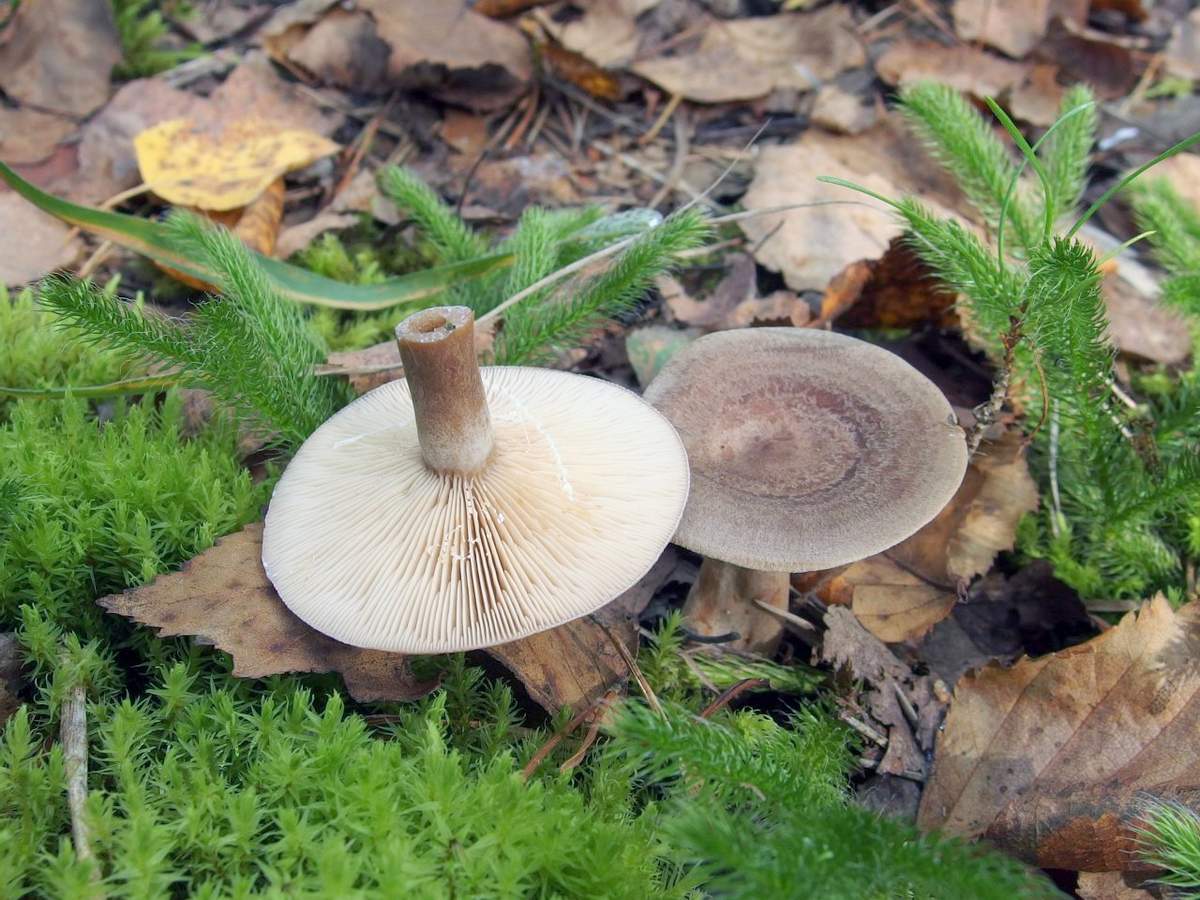 You may be interested in:
You may be interested in:Eating
Scientists still cannot come to a clear conclusion as to whether edible threshing or not. Doubts are associated with an unpleasant taste of milky juice, which can only be eliminated by prolonged soaking of mushrooms in water. Because of this, mushrooms are often referred to as conditionally edible, that is, they can be eaten, but they do not have special tastes.
Domestic mycologists argue with this opinion, convinced that some milkers are not only possible, but also need to eat. Simple procedures allow you to properly prepare the mushrooms for use, while preserving trace elements and beneficial properties. The peculiar taste allows them to confidently hold their positions in the ranking of unforgettable dishes on the festive table.
Collection rules
Collection of waves can begin in mid-summer, with pink appearing noticeably earlier than white. The active growth season lasts until mid-autumn, depending on the frequency of rainfall. When collecting milkers, each mushroom should be carefully examined, avoiding damaged or old ones.
Types and their description with photos
Among these representatives of the family Russula, both valuable edible mushrooms and almost inedible ones are found. They can be distinguished by the place of growth and appearance of the hats. Most milkers have a very similar island flavor.
The most common are white and pink traps, completely safe for humans. If desired, they can even be grown on a personal plot.
White top
This species is characterized by a white uniform color, without clear patterns on the hat. It is also called whitewash or white lactarius.
This representative of the mushroom kingdom does not reach particularly large sizes, it differs in a darkening area in the central part of the apex. As they age, the fruiting body becomes loose and hollow, loses elasticity and can be affected by pests.
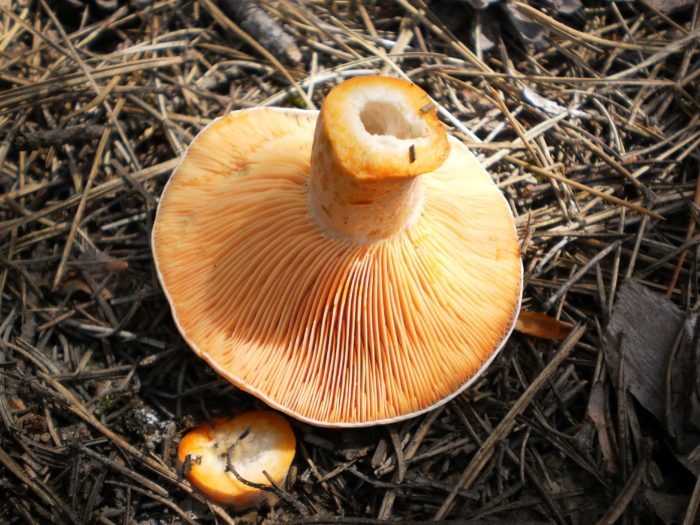 You may be interested in:
You may be interested in:Pink pink
The pink variety, known as Volzhanka, boasts the largest sizes among all representatives of the species. The name is due to the unusual color of the hat, and the flesh is usually just white.
The edges of the cap are slightly tucked down; it gradually deepens in the middle. Mushrooms grow in compact groups, are not afraid of shady areas.
Distinctive features of false species
False waves are very reminiscent of a pink variety, but smaller in size and unpleasant in taste. You can distinguish them by the hairless edge of the hat. The most similar species are found in the same area, confusing even experienced mushroom pickers. Some milkers are not just inedible, but can also provoke an eating disorder.
Edible
Among the edible counterparts of the bagpipe, one can name
- The faded milky has a hat of a white or grayish-lilac shade. Just like the white wave, there is a dark spot in the center. The leg of this variety is very light, slightly curved.
- An ordinary lactarius is difficult to confuse with other varieties, but at a young age its light color can be misleading. More mature representatives acquire a bluish color, almost reaching purple, so that the hat shines brightly. The edges of the cap are wavy and curved inward, the leg is grayish. The characteristic juice of this species is green on the cut.
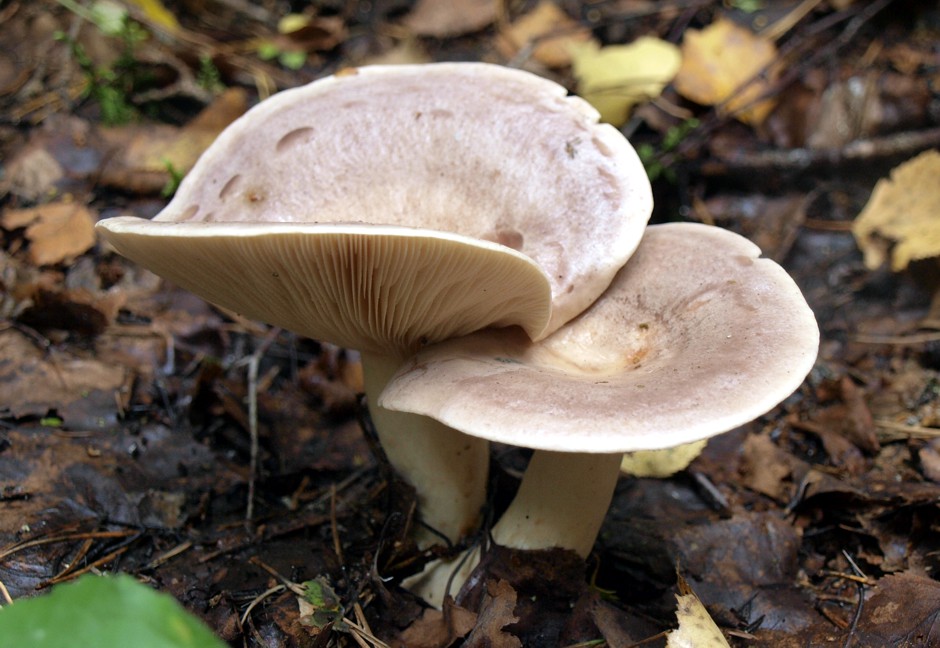
Common miller - The brown milky is distinguished by a dark velvet hat. An interesting feature of this species is a pinkish milky juice with a fruity aroma.
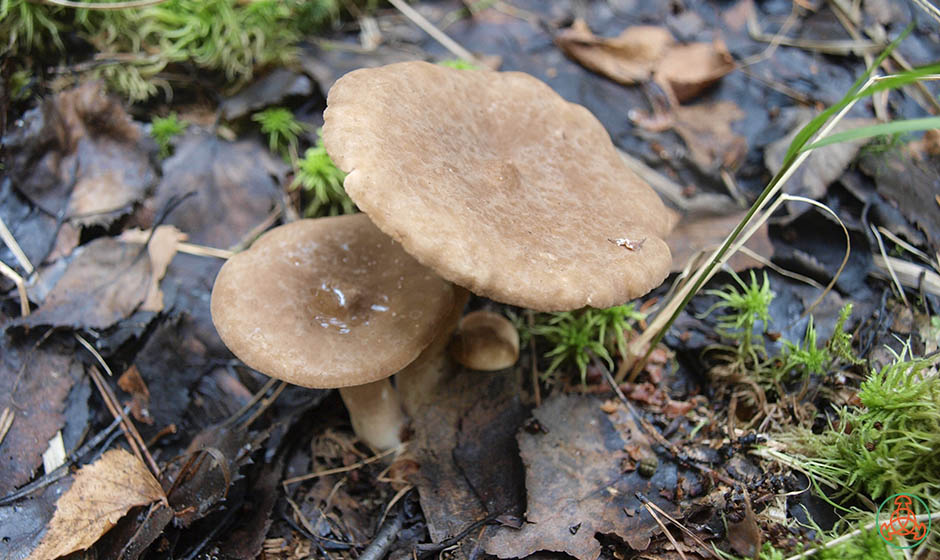
Brown milky - Hot-milk mushroom is not so valuable in terms of nutrition. He has a slimy hat and a grayish flesh. Despite the usual mushroom smell, the taste of these relatives of threesomes is very pungent, reminiscent of pepper.
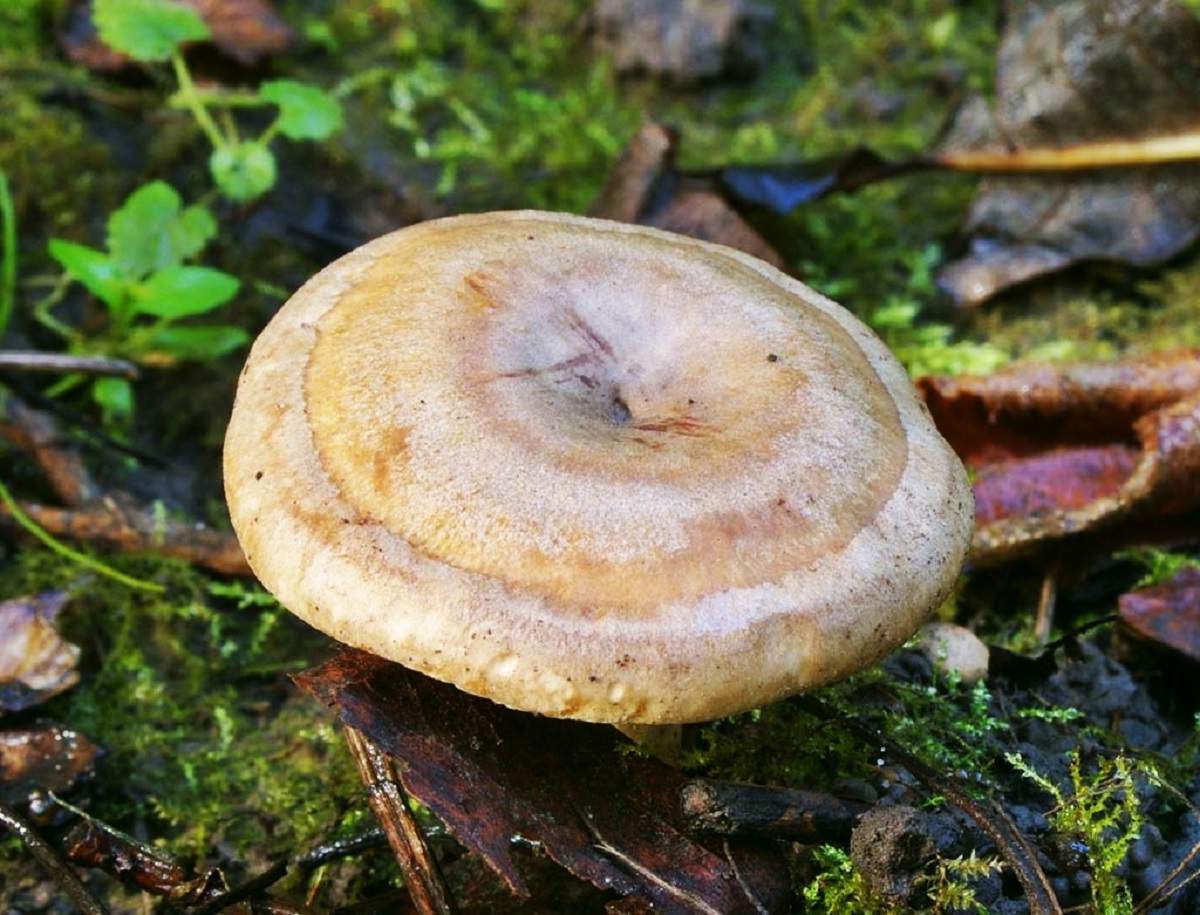
Milky Milky Milk
Inedible
Two types of lactic are dangerous for humans:
- Hepatic has a dark color in all parts, a smooth slightly concave hat. Juice in the air quickly turns yellow, the flesh on the break is friable and brownish. The taste of mushrooms is very unpleasant.

Liver fungus - Schlecnik is very similar to pink, but smaller in size. The hat may be reddish, but the flesh remains white. The mushroom has no smell; it tastes very spicy.
Useful properties and restrictions for use
The gastronomic interest in these varieties of milkers is due to the fact that many valuable chemical compounds were found in their composition:
- carbons;
- B vitamins;
- trace elements;
- antibacterial components;
- alimentary fiber;
- amino acids.
All of them in a complex provide the healing properties of lactecs, among which are the following:
- due to its low calorie content, the throat promotes rapid saturation and can be included in the diet menu;
- natural carbohydrates improve the well-being of patients with diabetes;
- a full set of vitamins has a positive effect on the condition of the skin, hair and nails;
- mushrooms are useful for diseases of the cardiovascular system;
- general immunity is strengthened.
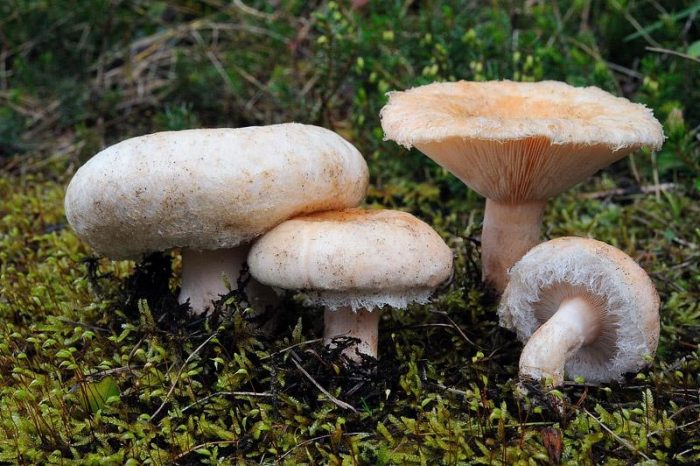
However, in some cases, the use of traps can be contraindicated. In particular, you should abandon the waves:
- patients with pancreatitis and with digestive disorders;
- pregnant and lactating women;
- children under seven years old;
- people who have had surgery to remove the gallbladder.
Cooking methods
Most often, edible milkers are salted or pickled. They categorically can not be consumed in raw form, and even before heat treatment it is necessary to soak in water. Useful canned foods can be made from them using ordinary salt and citric acid.
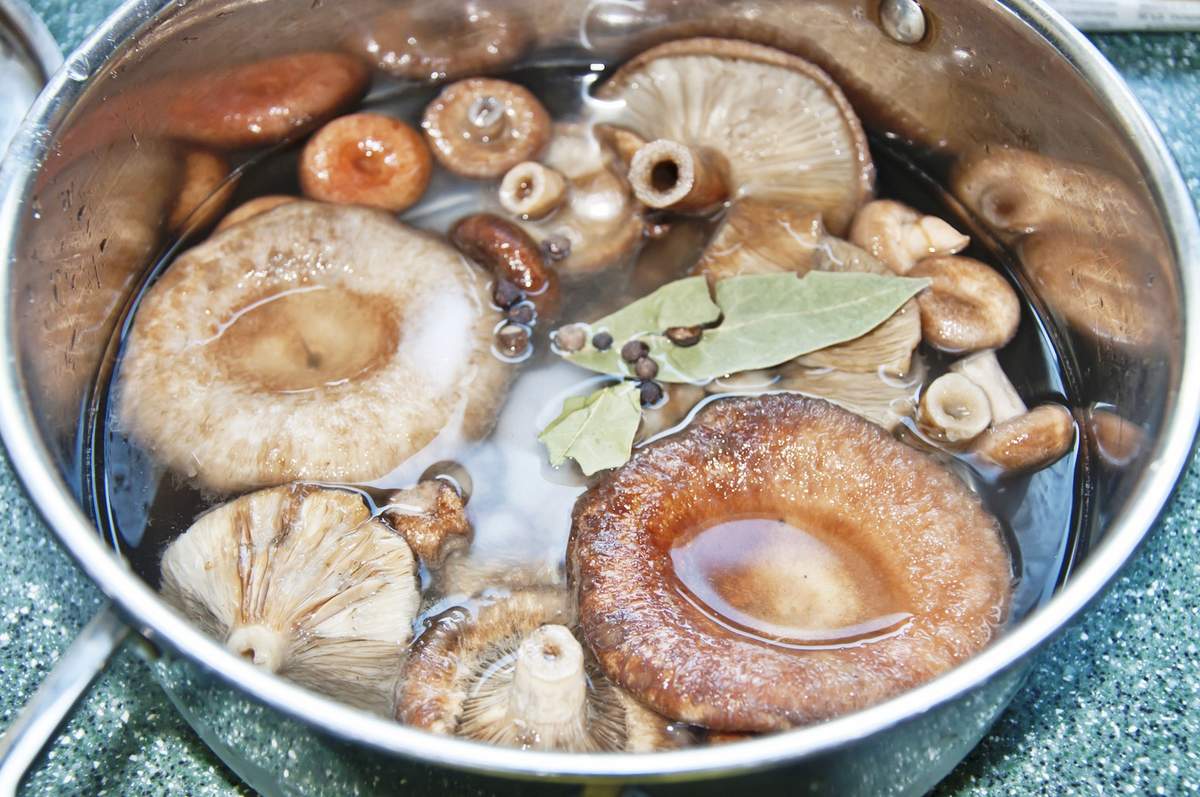
Peppers, as a rule, are not used, because the island taste of fruits compensates for the properties of spice. In addition, there are ways to cook volzhanka in simpler ways while maintaining useful properties.
Cooking
For a kilogram of fresh waves, you need a tablespoon of salt and a sufficient amount of water. Before cooking the milkers, they must be thoroughly cleaned of debris, villi, scales, rinsed and cut off the leg (for small individuals, you can simply remove the tip of the leg).
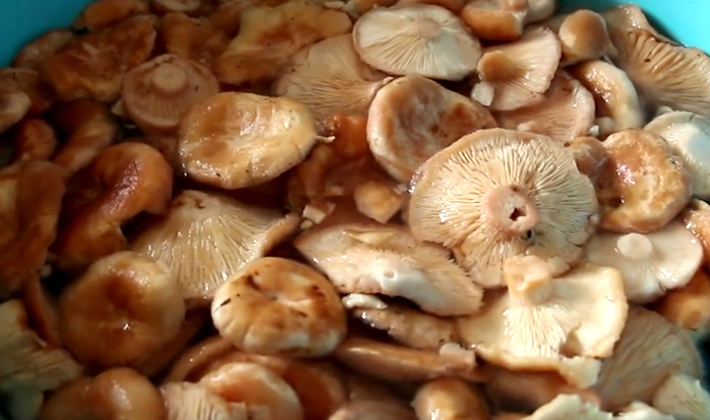
Cook for 15-20 minutes, then change the water and boil a little more. After these procedures, you can cook dishes according to different recipes or proceed to salting.
Frying
You can also fry such mushrooms. For 1 kg of milkers, you need to take two onions and a half tablespoons of salt, as well as spices to taste.
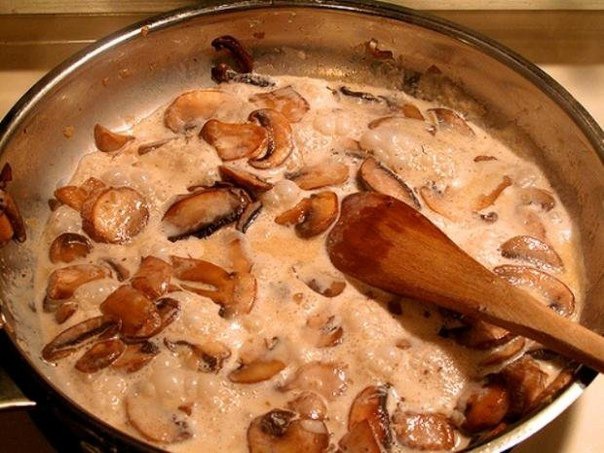
The washed and peeled fruit bodies are cooked for half an hour, the chopped onion is fried in a pan. Then add the prepared traps and fry all together for about 10 minutes.
Answers to widespread questions about threes
Despite the peculiar taste of milky juice, traps remain very tasty and healthy mushrooms. They are easy enough to distinguish from inedible brothers and cook at home. Subject to the rules of collection and processing, it will be possible to preserve all the natural properties of the mushroom.

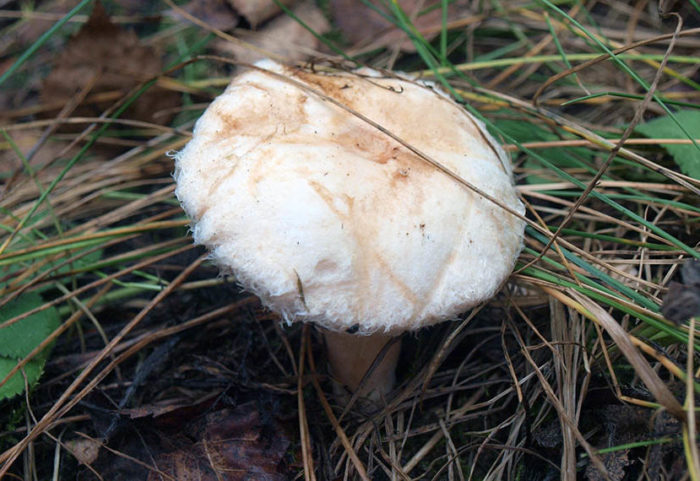
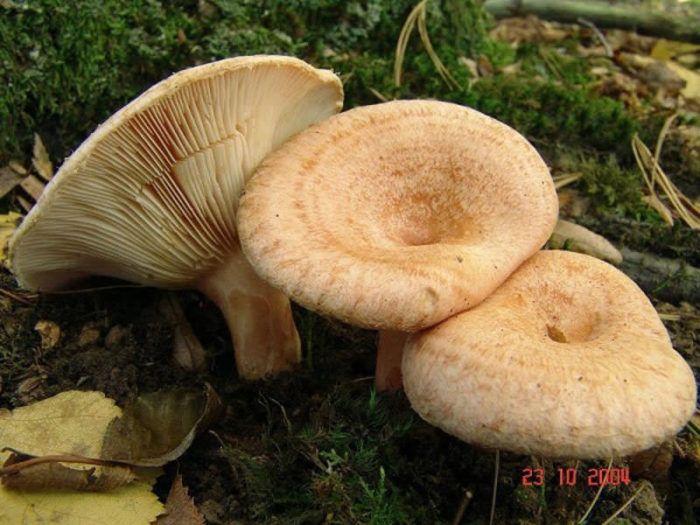
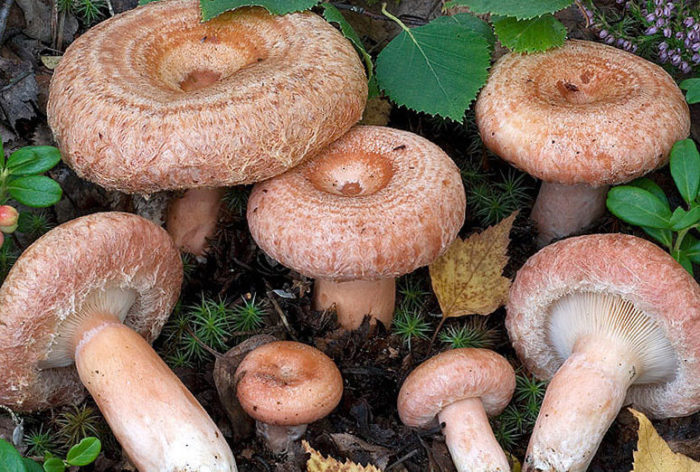
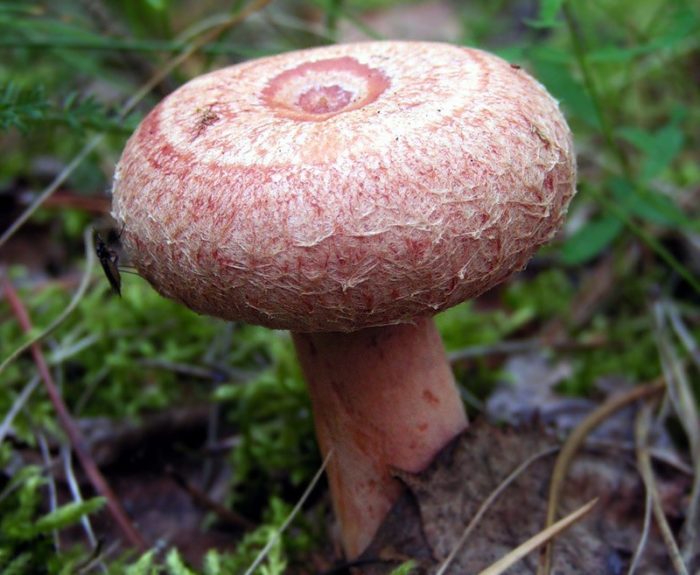
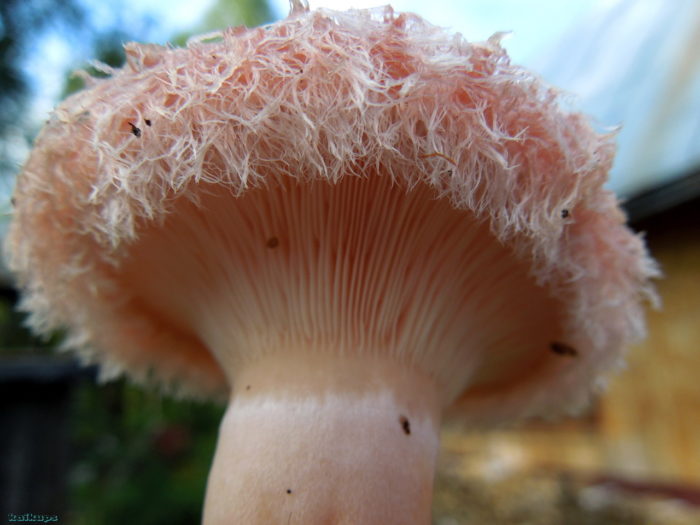
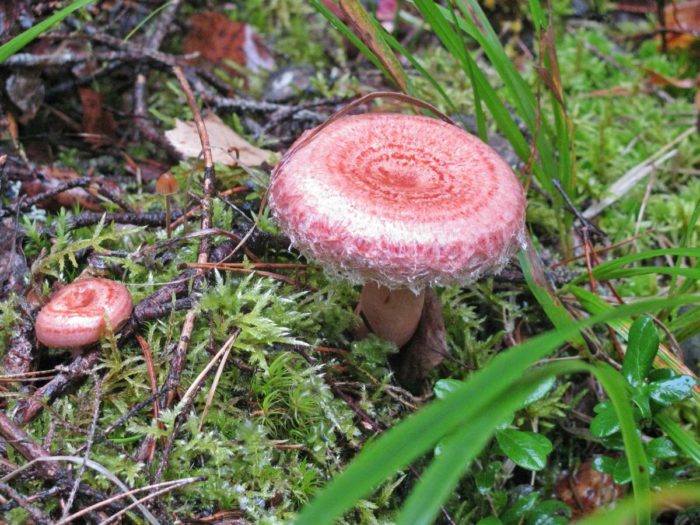
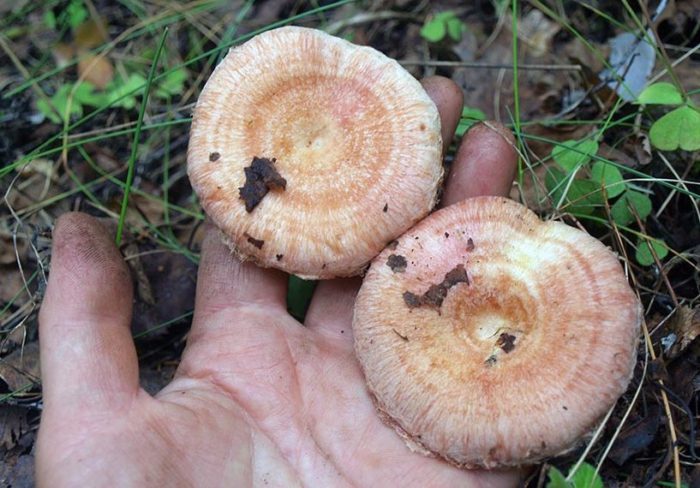
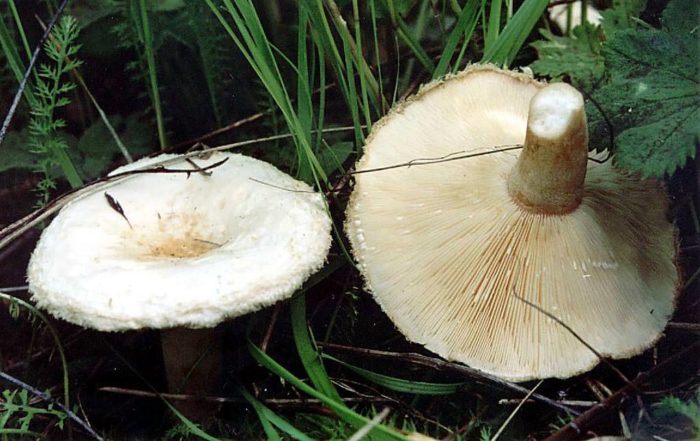
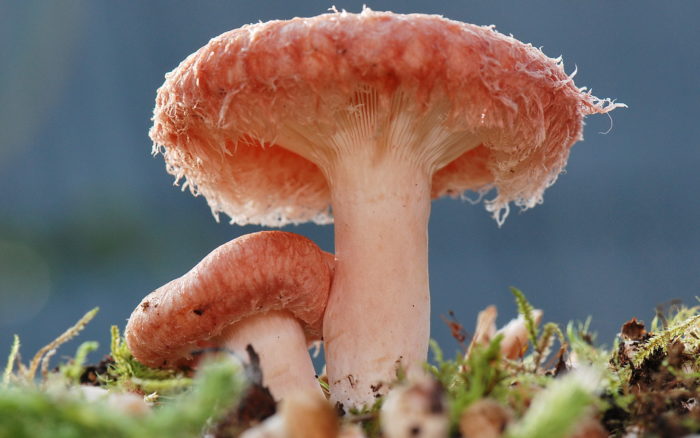



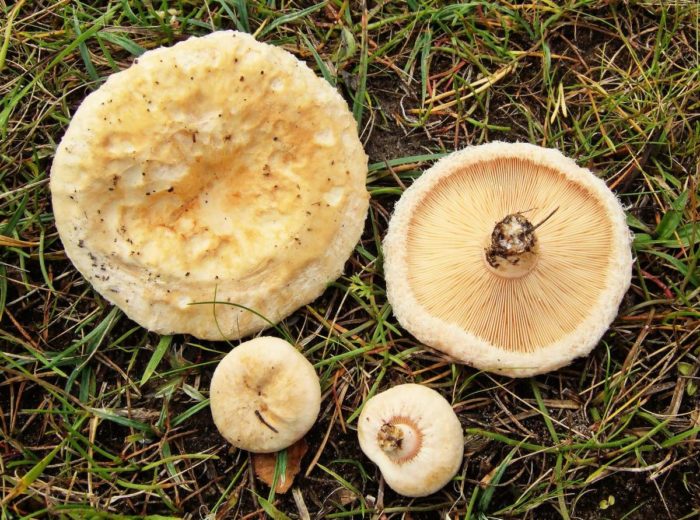
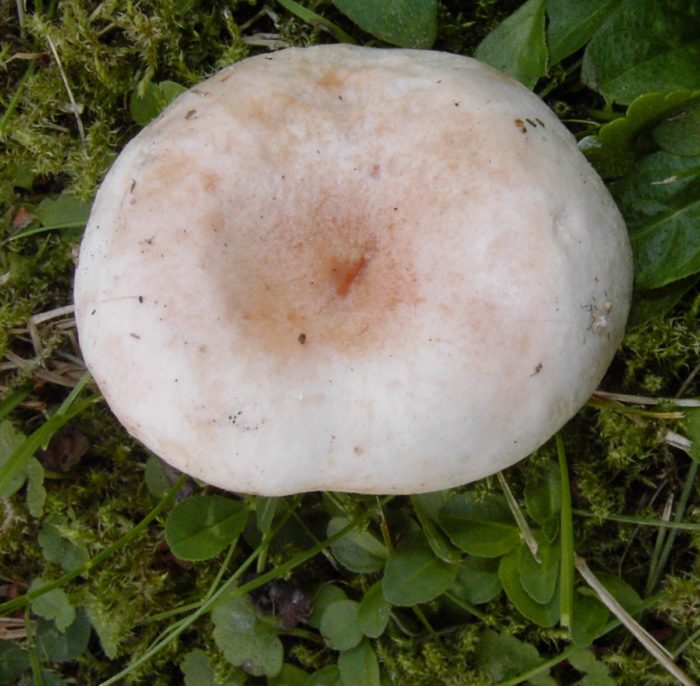
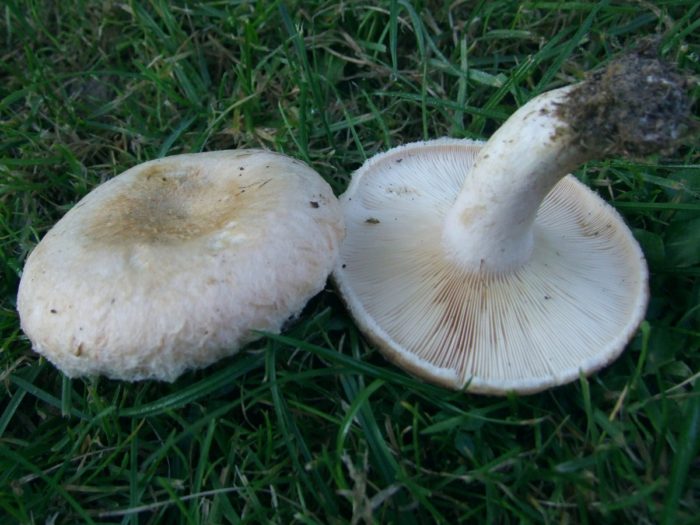
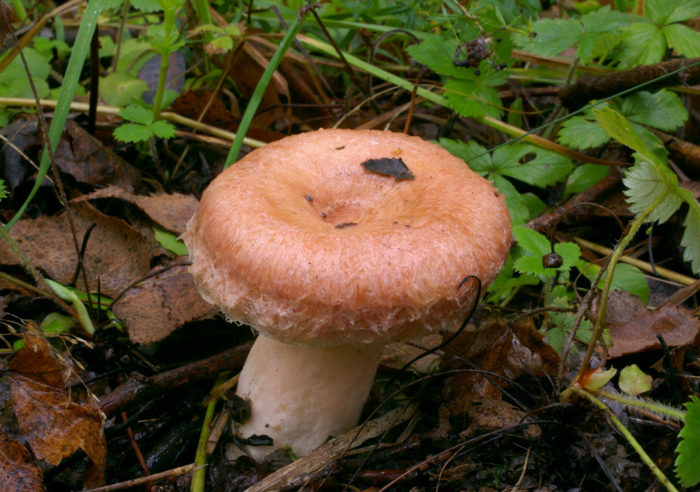
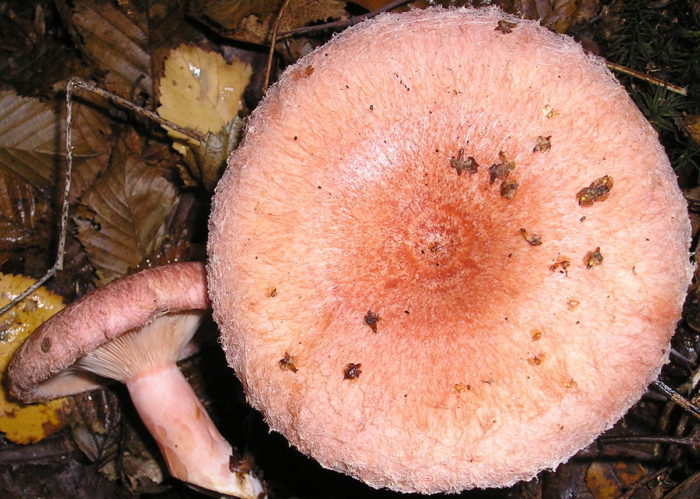
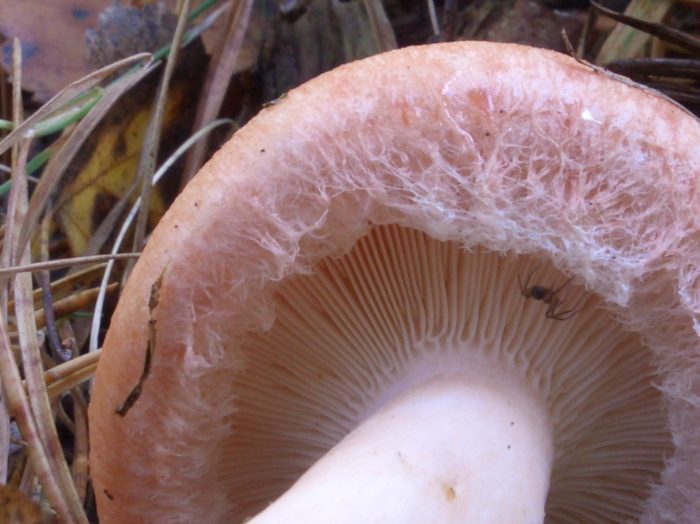
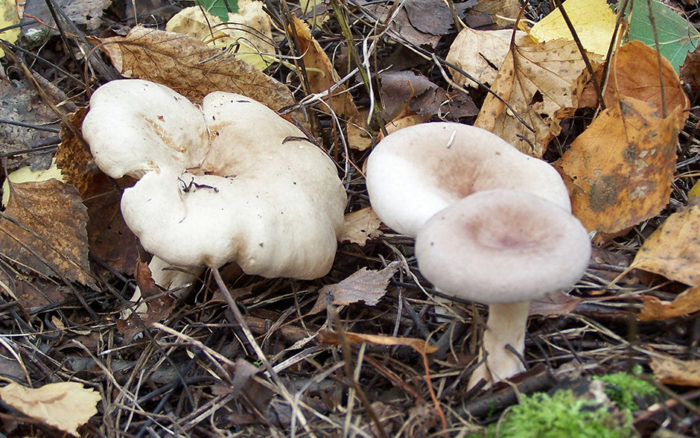
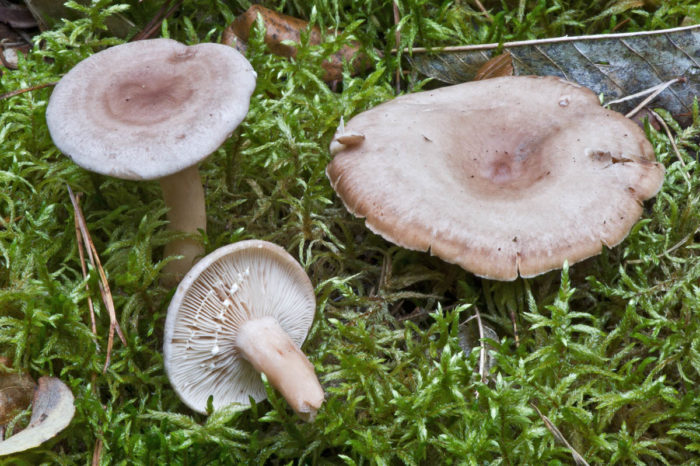
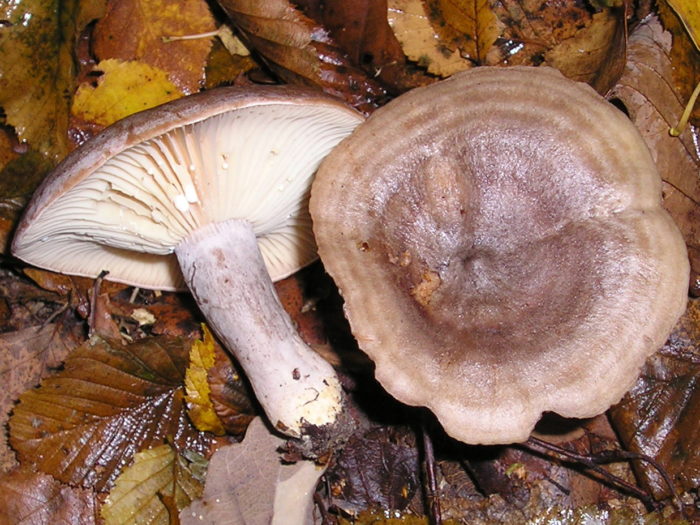
 Care and use of Kombucha at home (+22 photo)
Care and use of Kombucha at home (+22 photo) Edibility of the fungus of the motley umbrella and its description (+19 photo)
Edibility of the fungus of the motley umbrella and its description (+19 photo) Description of edible and inedible oils, their poisonous counterparts (+40 photos)
Description of edible and inedible oils, their poisonous counterparts (+40 photos) Useful properties of milk mushroom and its contraindications (+17 photos)
Useful properties of milk mushroom and its contraindications (+17 photos)
Valeri Mishnov
As a child, I lived in a village in the Kaluga region. In our country white whitewasheds grew by a continuous carpet on pastures. My sisters and I collected them in two buckets (total 6) at a time. At home, little whites were cleaned of fringe and soaked. My grandmother said that we need to change the water for two days five times, and then cook. A total of five buckets of cube was prepared for the winter with a capacity of only one balenka. Pink waves were also cleaned from fringe, but they were salted together with other milkmen and breasts.